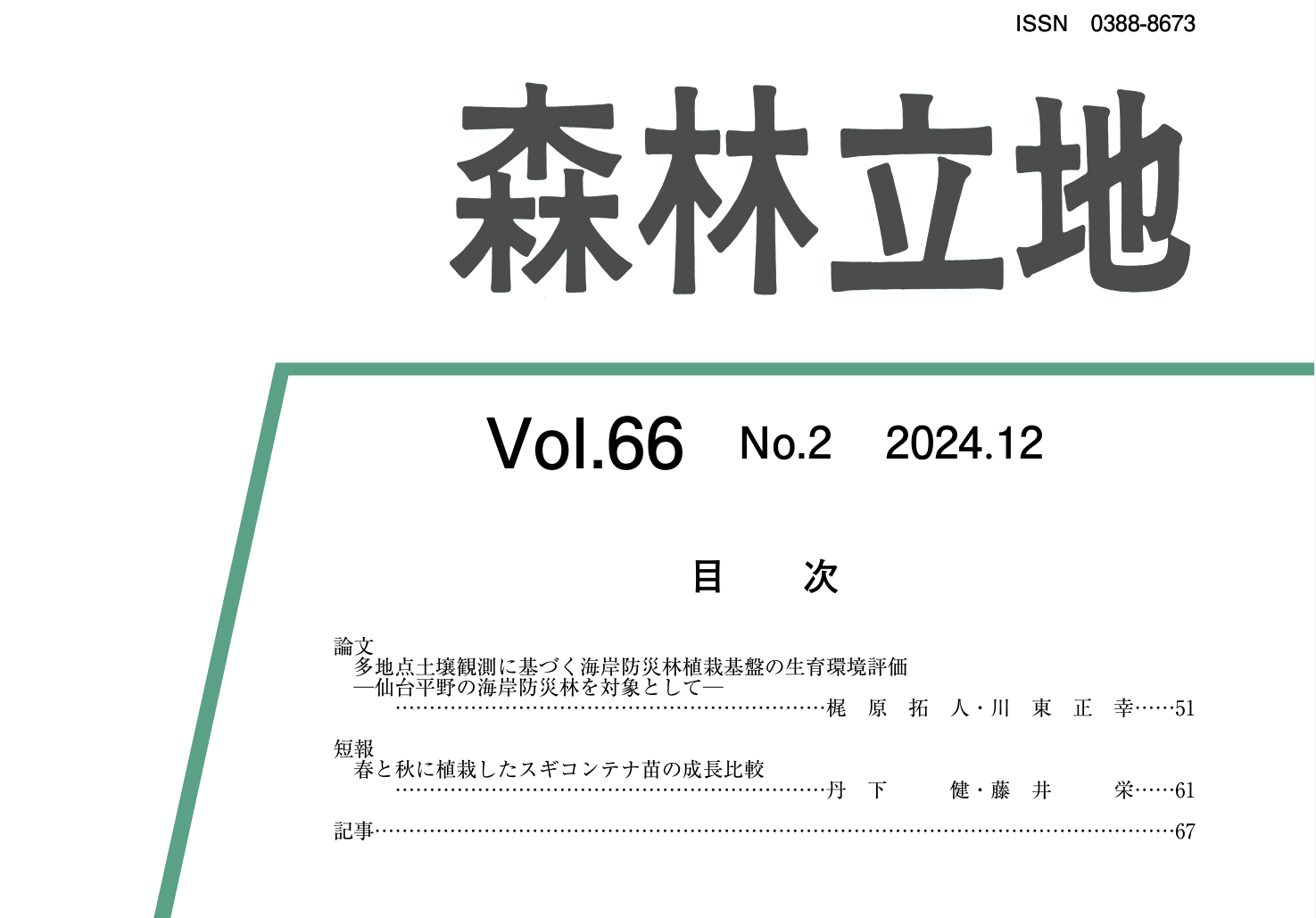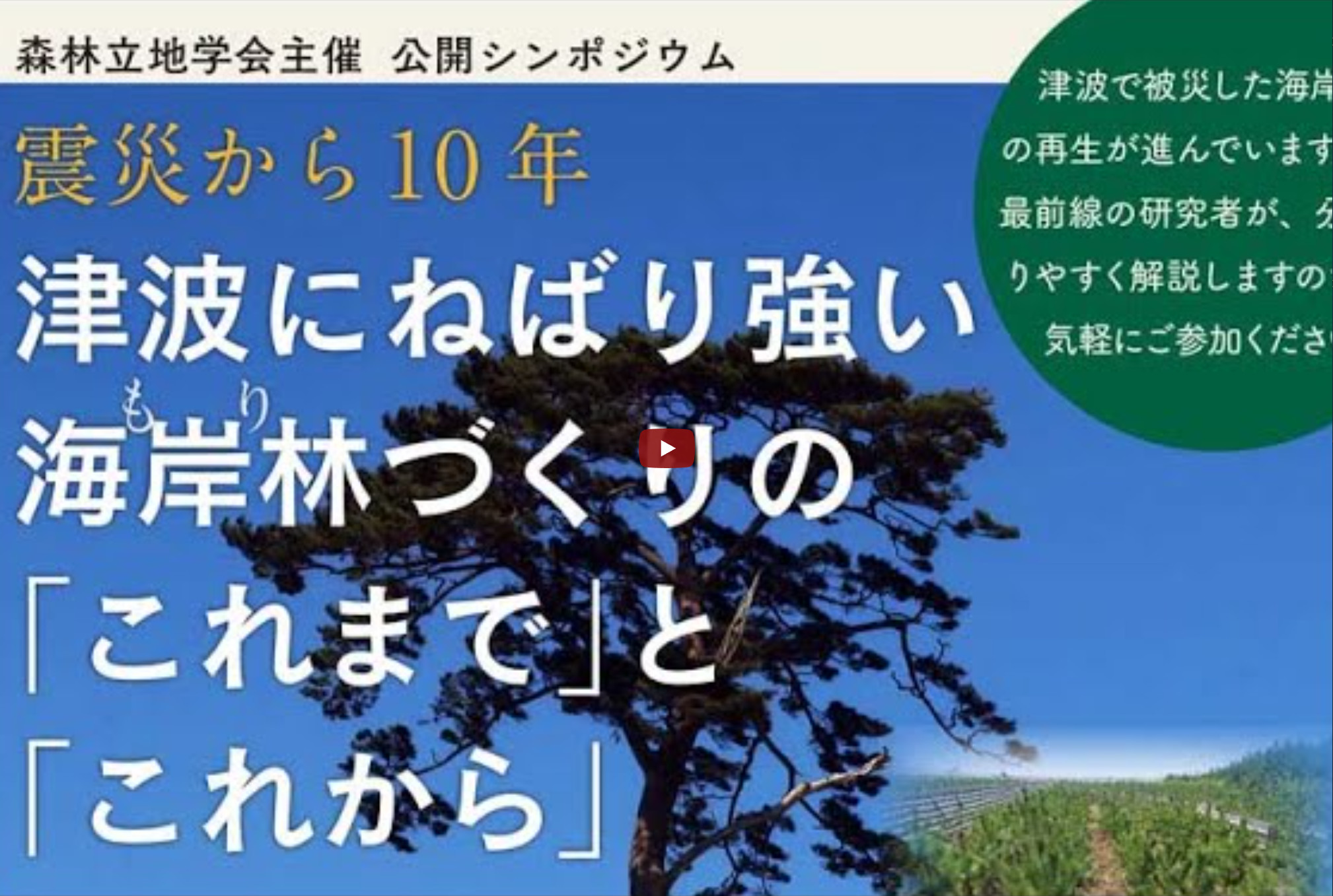森林立地58(2),41~50 2016
Jpn J For Environ 58(2), 41-50, 2016
Water level fluctuations and tree species combinations in floodplain forests managed for açaí (Euterpe oleracea) production in the Amazon River Estuary
Ryo Kitamura1,*, Hiroto Toda2, Masaaki Yamada2, Sonoko Dorothea Bellingrath-Kimura3, Yosei Oikawa2, Sachi Nagai4, Motoi Kusadokoro2 and Gota Tsutsumi4
1United Graduate School of Agricultural Science, Tokyo University of Agriculture and Technology, 2Institute of Agricultural Science, Tokyo University of Agriculture and Technology, 3Institute of Land Use Systems, Leibniz Centre for Agricultural Landscape Research, Germany, 4Graduate School of Agriculture, Tokyo University of Agriculture and Technology
In the Amazon estuary, the açaí palm (Euterpe oleracea) grows on the tidal floodplain. The fruit of this plant is a regiona staple food. Owing to the selective removal of other tree species, intensive açaí-growing regions are rapidly expanding. At present, the effects of water level fluctuations, topography, and intensive cultivation on açaí growth are poorly understood. In the present study, we investigated the effects of water level fluctuations with different topography and plant species mixtures on açaí growth, by surveying trees in six study plots on Cação Island, five plots on Murutizal Island, and two plots each on Juruateua and Juba islands, Pará State, Brazil. Elevation and above- and underground water levels were measured to assess submergence conditions in the plots on Cação Island. Açaí exhibited better growth on higher ground at 5 m, non-reducing surface soil, shorter durations of submergence (110―120 h month-1), more consecutive days of non-submergence (6 d month-1), and in the presence of mututi (Pterocarpus sp.), miriti (Mauritia flexuosa), and ucuúba (Virola surinamensis). The results for most of the study sites suggest that >6 consecutive days of non-submergence per month resulted in land characteristics that were suitable for sustainable açaí production and simultaneous ecosystem conservation. The results also suggested a combination of other tree species (>20% of total), and density of approximately 1,000 açaí ha-1 was appropriate for efficient açaí production.
潮汐による水位が変動するアマゾン川河下流低湿地では,地域住民の経済的基盤作物(果実)を生産する天然生アサイー(Euterpe oleracea)以外の樹種を除伐することにより,植生の単一化が急速に進んでいる。しかしながら,水位変動や地形などの立地条件とアサイーの単一化がその生育に与える影響についての知見は少ない。本研究では,アサイーの生育に及ぼす立地の高低差に伴う水位変動と他樹種との混交状況の影響の評価を目的とした。調査は,カソン島で6カ所,ムルチザウ島で5カ所,ジュルアテウア島・ジューバ島で2カ所ずつ毎木調査を実施した。地形の高低差を水位変動による冠水時間との関係に置き換えるために,カソン島の調査区で地形調査を実施し,年間を通して地上・地下水位を測定した。アサイーの生育が良好な立地は,地盤高が5m程度で,平均冠水時間が110―120時間/月と短く,連続非冠水日数が6日/月と長めのため,表層土壌が還元状態になかった。また,ムトゥチー(Pterocarpus sp.),ミリチー(Mauritia flexuosa),ウクウーバ(Virola surinamensis)などとの混交率が高かった。調査地の多くで,生態系保全を考慮したアサイー生産のため,連続非冠水日数が月6日未満の立地を避け,他樹種と平均20%以上混交させ,アサイー密度を1,000本/ha程度に管理されていた。
キーワード: açaí palm management, floodplain, Amazon estuary, submergence conditions, plant mixture ratio





